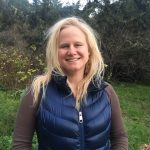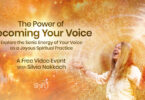 By Anna Swisher
By Anna Swisher
Guest Writer for Wake Up World
How can you make a difference? How can you embody systemic change at a local level? How do you not burn out? How can you enjoy your life while simultaneously fighting violence, destruction and collapse? What can you do in your community to support the healing of our world? Aren’t you curious if we can do things differently – and together?
Recently, I co-facilitated a community workshop focused on Dance as Activism. Fifteen of us gathered together to explore “Why Dance Matters,” and to better understand the needs of our communities and our own unique roles as authentic activists. We explored through movement, as well as large group councils, small group discussions, and exercises from The Work That Reconnects.
The workshop was a huge success. Everyone left feeling inspired, with clear action steps to take towards our intentions and initiatives. But what moved me most was the feeling of togetherness. In one afternoon, we created a tribe. We felt less alone. No one of us could do it all, but together, we could do so much. Many people expressed how amazed they felt at their capacity to love and care for people they had just met.
A range of emotions was felt and expressed throughout the afternoon: Heartbreak, fear, love, longing, care, sorrow, anger, desire, doubt, helplessness, frustration, guilt, concern, tenderness. Together we were a fully functioning organism; and, time and time again we turned to our bodies for insight, inspiration, information, and guidance. We allowed our bodies to process and integrate our intellectual processes. We danced around a metaphorical fire and hooped, hollered, and cheered each other on as, one by one and two by two and three by three, we burned our fears and doubts, grieved our losses, ignited our desires, and celebrated our unique forms of expression.
As we shared our closing reflections, people were touched, moved…and hopeful.
As humans, we have an innate impulse and capacity to use our minds to understand, create, and process things. But this is not the whole story. Our entire lives take place in our bodies; they are indeed our vehicle, our home, and our storage unit. We carry generations of genetic information, as well as (at least) one lifetime of experiences, in our bones, muscles, bloodstream, tissues, and organs. We are the only animal that doesn’t automatically shake our entire body after a traumatic experience, in order to release the trauma from our bodies and continue moving through the world with the relaxed sensitivity needed to respond appropriately to our environment. Instead, we (usually) carry all the hard stuff around with us, and we develop coping mechanisms, defenses, and addictions to enable us to continue moving through a broken and traumatic world. And then we pass these physical conditions on to our offspring, creating lineages of tight shoulders, stiff postures, mistrust, fear, dis-ease, and self-protection.
This is why I believe that dance must come back to the center of the village. There is no possible way that we can find our way to a sustainable future with only our minds, when our bodies are responsible for so much of the story. Whatever “dance” means to you, I challenge you to broaden your view of what it means. I recently taught a dance class where we found ourselves sliding and pulling each other around the floor on blankets, laughing and exhausted. And we all felt closer, stronger, looser, and better afterwards. It’s not just about performance; though performances of many kinds can absolutely touch, inspire, and tell important stories that need to be heard. It’s not just about technique; though the various techniques from different parts of the world bring with them the stories of that place and those people, and are invaluable ways of understanding another culture and way of experiencing the world. These things can be much-needed medicine for the times that we are in right now. Certain African and Brazilian dances embody the stories of non-violent resistance, and resilience in the face of violent oppression. Other dances embody grace, balance, partnership, group cohesion, or healthy expressions of sexuality and love.
But to me, it matters less how we dance; what matters most is that we dance. That we shake out our fear before it claims us; that we stomp and pound and express our anger before it poisons us. That we celebrate all that is good and beautiful by feeling it in our bodies as we spin around in circles with a grin on our face. That we let go of our rigid, conditioned and structured ways of moving, and give ourselves permission to be weird, uncoordinated, and silly. How else will we make it through this chaotic and unprecedented global crisis?
How will we make it through, indeed? And where can we look for guidance? Well, when we look to nature, and to all naturally functional systems on the planet for guidance, we find something quite astounding about how things change. It’s called “Emergence.”
Emergence is the idea that when different parts of a system come together, and respond to whatever is happening in the environment in order to continue living and thriving, something new often emerges that is different than the sum of its parts. Something unpredictable. As connections are made between disparate parts of the system, the entire system develops new properties and capacities that no single organism possessed on its own. This means that there is literally no way of predicting the structural shifts which will take place within the system, when the different parts come together. New properties emerge spontaneously as networks connect and organisms adapt together. And, it is crucial to note that organisms within functional systems must be able to feel what is happening and move spontaneously in order to respond, connect, and adapt appropriately. And if the different parts of the system don’t connect, the systemic change doesn’t happen.
Understanding the components and structures of current systems does not actually enable us to predict what will happen, or mandate or impose any functional change. What needs to happen is that the various parts of the system need to come together, in order to organize and respond to what is happening in the environment. AND, in order to respond appropriately, they need to be able to FEEL what is happening in their own bodies, as a response to what is happening around them. Feeling is essential to being able to respond and evolve appropriately, to preserve Life. And, of course, we have to be willing to change. We have to be willing to show up and come together without knowing what might happen.
Coming together to dance is this: Bodies, organisms, coming together, to move, to feel, to connect, and to respond. Dancing has always been a way of responding to and getting through something, whether it be celebration, growth and rites of passage, grief and death, war, the hunt, the harvest, new marriage or unions, tragedy or oppression. It is not through “figuring it out” that we are going to get through this. We must restore our capacity to feel and respond. We must loosen up our bodies and take deep breaths into our hearts, and dare to feel sorrow, pain, exhaustion, and collapse. These are appropriate responses to what is happening in our world. We must shake out the stuckness, the anger, the fear, the resentment, the blame, the guilt, the despair. We must remember what joy and freedom feel like. We must enhance our capacity for resilience, in our own bodies and organisms. We must turn to the innate intelligence stored in our living bodies, learn how to listen, and allow it to guide us. Who cares what it looks like? We must practice letting go of what we think we know, and being open to something new and spontaneous emerging. And we must do it together, if we truly want to see the systemic change necessary to preserve life.
In our workshop, many people commented on how few spaces exist for people to dance freely together. How can we create more opportunities for people to come together and move freely and spontaneously as functional systems? How do we bring more organisms and networks together in the spirit of fostering emergence? What does it take to get people to show up for something with no measured guarantee or predictable outcome?
I think of organizations and corporations dancing together. I think of young people and elders being included more. I think of busy mothers and fathers having a chance to let go, in the embrace of a group that shares a collective concern for the children. I think of people from different cultures dancing together, resolving conflict and celebrating difference. I don’t know what it looks like, but I know that in our bodies, we possess all the intelligence necessary. Can we dare to listen? Are we willing to try something new? Are we ready to let go of having to do it alone?
Dance is one way; not the only way. Our systems are complex. Our communities are already full of people, organisms, with ideas, stories, needs, skills, connections, and concerns. I dare you to self-organize, to come together, and to see what happens.
But get your body involved. Show up. Slow down. Shake. Listen. Question the habitual movements. Dare to feel something. If you don’t know how, then find someone who can help you learn to listen to your body. We need all the help we can get; why would we turn away from the wisdom inherent within us? We’ve had centuries of denigrating the body in countless ways; let’s try something different.
I, for one, am hopeful.
About the author:
 Anna Swisher is a community activist, ecopsychologist, youth mentor, movement teacher and Work That Reconnects facilitator from California. She currently shares her time between San Francisco and western Ireland. Find out more about Anna, and her work, at www.TendingTheSacredHearth.com.
Anna Swisher is a community activist, ecopsychologist, youth mentor, movement teacher and Work That Reconnects facilitator from California. She currently shares her time between San Francisco and western Ireland. Find out more about Anna, and her work, at www.TendingTheSacredHearth.com.

If you've ever found value in our articles, we'd greatly appreciate your support by purchasing Mindful Meditation Techniques for Kids - A Practical Guide for Adults to Empower Kids with the Gift of Inner Peace and Resilience for Life.
In the spirit of mindfulness, we encourage you to choose the paperback version. Delve into its pages away from screen glare and notifications, allowing yourself to fully immerse in the transformative practices within. The physical book enriches the learning process and serves as a tangible commitment to mindfulness, easily shared among family and friends.
Over the past few years, Wake Up World has faced significant online censorship, impacting our financial ability to stay online. Instead of soliciting donations, we're exploring win-win solutions with our readers to remain financially viable. Moving into book publishing, we hope to secure ongoing funds to continue our mission. With over 8,500 articles published in the past 13 years, we are committed to keeping our content free and accessible to everyone, without resorting to a paywall.






